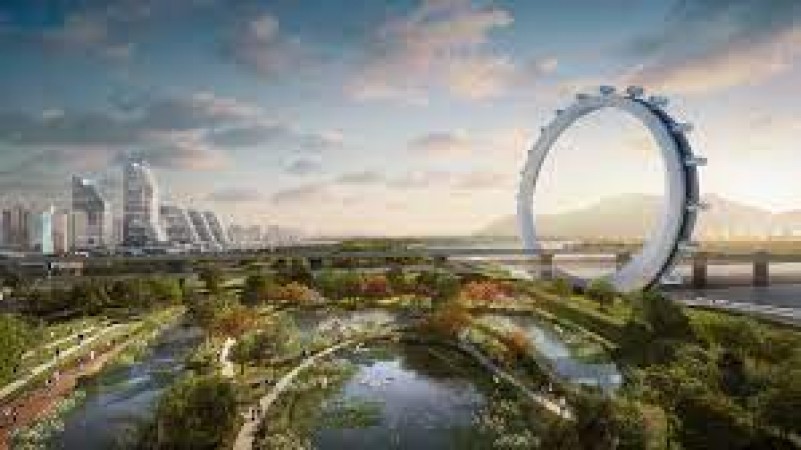
Sponge cities are a vital innovation in urban planning, especially in the context of increasing urbanization and climate change. These cities are designed to mimic the natural hydrological cycle by efficiently managing stormwater runoff. The term "sponge city" originates from the idea of cities acting like sponges, soaking up rainfall and releasing it slowly, thus reducing the risk of flooding and replenishing groundwater supplies.
Characteristics of Sponge Cities
Sponge cities incorporate various strategies and features to enhance water retention and reduce runoff, such as permeable pavements, green roofs, rain gardens, retention ponds, and wetlands. These elements allow rainwater to infiltrate into the ground instead of flowing directly into storm drains and overloading sewer systems.
Benefits of Sponge Cities
The implementation of sponge city initiatives brings several benefits to urban areas, including:
Flood Mitigation: By reducing surface runoff and increasing groundwater recharge, sponge cities help minimize the risk of urban flooding during heavy rainfall events.
Water Conservation: Capturing and storing rainwater for later use helps conserve water resources, especially in regions prone to drought.
Improved Water Quality: Natural filtration processes in green infrastructure elements help remove pollutants from stormwater, leading to improved water quality in rivers, lakes, and other water bodies.
Enhanced Urban Green Spaces: Incorporating green infrastructure into urban areas increases the amount of green space, enhances biodiversity, and provides recreational opportunities for residents.
Climate Resilience: Sponge cities are better equipped to adapt to the impacts of climate change, such as increased frequency and intensity of storms, by reducing vulnerability to flooding and water scarcity.
Examples of Sponge Cities Around the World
Several cities worldwide have embraced the concept of sponge cities and implemented innovative strategies to manage stormwater effectively. Some notable examples include:
Singapore: Singapore is renowned for its ambitious efforts in transforming into a sponge city. The city-state has implemented a range of green infrastructure projects, including rain gardens, bioswales, and underground detention tanks, to capture and treat stormwater runoff.
Portland, Oregon, USA: Portland has been a pioneer in green infrastructure planning, with initiatives such as eco-roofs, permeable pavements, and roadside swales aimed at reducing stormwater runoff and improving water quality in the city's rivers and streams.
Suzhou, China: Suzhou has undergone extensive urban redevelopment to combat flooding and water pollution. The city has constructed numerous wetlands, retention ponds, and green corridors to absorb and retain stormwater, earning it recognition as one of China's leading sponge cities.
Melbourne, Australia: Melbourne has implemented various water-sensitive urban design initiatives to manage stormwater and enhance water sustainability. These include rain gardens, constructed wetlands, and decentralized water harvesting systems integrated into the city's parks and public spaces.
Is Your City a Sponge City?
To determine if your city is a sponge city, look for the presence of green infrastructure projects and water-sensitive urban design features aimed at managing stormwater runoff. These may include permeable pavements, green roofs, rain gardens, retention ponds, and wetlands integrated into the urban landscape. Additionally, check if your city has formulated specific policies or initiatives targeting water management and climate resilience.
Sponge cities represent a forward-thinking approach to urban planning that prioritizes sustainable water management and climate resilience. By implementing green infrastructure and water-sensitive design strategies, cities can mitigate flooding, conserve water resources, improve water quality, and enhance overall urban livability. Embracing the principles of sponge city planning is crucial for building resilient and sustainable cities that can thrive in the face of climate change and rapid urbanization.
You can save your favorite place on Google Map, know the complete process here
IQOO Z9 will be launched in March, these features will be available with 5G connectivity
Truecaller launches call recording and transcription feature